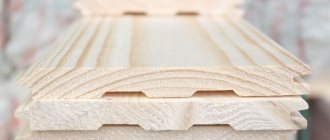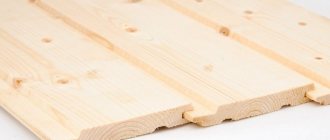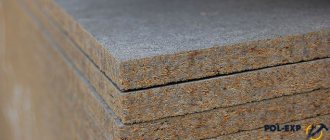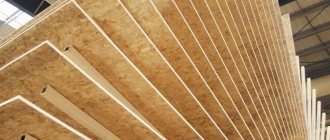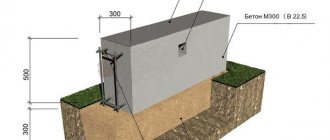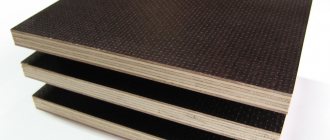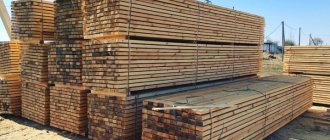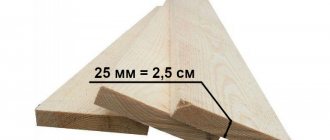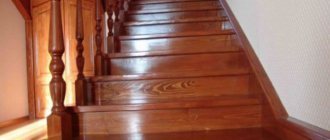Laminate is a floor covering made in the form of boards from specially prepared pressed laminated boards. This is a rather stylish, beautiful and comfortable material, which is often used to cover the floors of apartments and private houses.
To make the right choice when purchasing, you need to know exactly the size of the laminate. It is also useful to understand other characteristics that directly affect the service life of the coating.
Laminate characteristics
Like other materials, laminate has parameters that affect its performance characteristics and ease of installation.
The number of boards in the package depends on the size. Coating characteristics:
- thickness;
- length;
- width.
Important! It is generally accepted that the thicker the laminate, the stronger it is. However, it is not. It all depends on the materials used - high-quality panels are based on a high-strength slab.
Manufacturers do not adhere to uniform standards. Therefore, boards have completely different dimensions.
Laminate
The number of planks in the package also varies:
- 5 items;
- 10 pieces;
- 8 pieces is the most common packaging option.
However, focusing on the number of lamellas is wrong. The main thing is to take into account the total area of the lamellas in one package. When purchasing, it is recommended to round the quadrature up. After all, it is unknown how many strips will be needed for trimming. The excess material will be useful later for replacing damaged strips.
Laminate width and length
The width of the laminate and its length also vary. The linear parameters of the panels should be selected based on the geometry of the room. For a narrow corridor, it is preferable to take long boards - they are easier and faster to install.
Material Length:
- 1260-1380 mm is the standard laminate size; these panels are the most widely represented on the market.
- 1845 mm - the longest boards.
- Sizes smaller than 1000 mm are rare, in specific collections. This includes imitation Kaiser parquet with dimensions 406 * 806 or Quick-step square laminate, the width and length of the board is 394 * 394 mm.
When choosing, you should consider ease of installation. A long narrow board is laid faster, but places increased demands on the preparation of the base.
Narrow lamella
Board width:
- size 400 mm and above – special collections (imitation parquet);
- 300-350 mm – ceramic imitation;
- 195 mm is the most common size;
- 160 mm and less - narrow laminate, imitates slatted flooring or parquet.
So, the sizes of the laminate are varied. Thanks to this, it is possible to choose a coating for any interior. It is possible to use patterns under ceramic tiles or natural parquet. It is worth selecting the size of the panels so as to minimize the number of scraps.
Laminate marking
To understand the characteristics of the laminate in question and its features, just look at its markings displayed on the back of the board. There are various indicators:
- Sample class. This indicator makes it possible to select an instance for specific operating conditions (for example, class 32 is suitable for use in commercial premises with medium load).
- Type of lamella connection. The R-CLICK marking is often found, which indicates the possibility of reusing the boards, since no adhesives are used for this connection.
- Type of processing. The image of a plane on the back of the board indicates that visually the panel will imitate the corresponding processing.
- Additional elements. The V icon indicates the presence of a chamfer around the perimeter of the board, as a result of which a natural wood board is imitated (read: “What laminate with a chamfer looks like in the interior”).
- Board lifespan with proper use.
Before choosing a laminate, you need to carefully consider all possible characteristics and know which option is required for a particular case. In addition, it is worth remembering that the cost of identical samples on the market may vary, so it is better to give preference to products from a well-established company.
Is fibreboard flooring harmful?
As you know, laminate is not a natural material, so many people are interested in the issue of environmental safety of flooring. Let us immediately note that there is no reason to worry: laminate floors can be installed in any room, including children's rooms.
The material is based on wood, which is considered the purest material. The filler is glued together using natural resin or artificial glue. The second option does not contain toxic substances, so a priori cannot cause harm to health.
The outer covering is usually made of acrylic or melamine resin. These components, although artificial, are absolutely harmless to the human body. It is worth clarifying that melamine is not an adhesive material, so formaldehyde is usually added to it.
The inclusion of this component often raises concerns. Indeed, formaldehyde vapor can be harmful to health, but in order for this substance to pass from a solid to a gaseous state, a very high temperature is required, which cannot be achieved in room conditions. In addition, make sure that the E1 (formaldehyde does not exceed 0.12 milligrams per m3) according to the European standard EN 14041:2004 .
Conclusion: laminate is harmless, and rumors about its toxicity are idle fiction.
Standard laminate dimensions
It would seem that laminate has been used for a long time and its dimensions should be standardized. In practice this is not the case. There are no uniform standards for laminate panels. A wide variety of sizes are used, depending on the coating manufacturer. And there are more than enough companies producing this material in the world today. As well as a variety of textures. Although there are “eternal standards”, for example, light oak.
Plank thickness
The stability of the dimensions completely depends on this parameter of the laminate board. When using material with standard dimensions, you can significantly simplify the process of installing laminate flooring, because during the flooring the number of cracks becomes minimal. In addition, the thickness of the module affects the heat conductivity of the floor covering and the resistance to high loads that often arise due to the heavy weight of the furniture.
But the wear resistance class does not depend on the thickness of the strip, since the degree of wear of the protective coating is determined by the characteristics of the laminate itself. Thus, the dimensions of a laminate of class 33 in thickness can be identical to the parameters of a laminate coating of class 31 or 32.
The photo shows the dimensions of the laminate flooring
The standard minimum laminate size is 6 mm. In section it can take a maximum thickness of 12 mm. And this is almost identical to a parquet board, whose thickness is 14 mm. The optimal width is 8 mm. Most often, this standard size is used by many manufacturers when making laminate flooring. But how to lay cork underlay under laminate and how to do this procedure correctly with your own hands is described in this article.
Board width
This parameter of the laminate flooring must be taken into account depending on the room in which the laminate will be installed. If you need to get a surface similar to parquet, you will have to use a narrow structure, the width of which is 90 mm. A material with a width of 330 mm is indispensable when installing a product in the form of tiles or in order to obtain an abstract pattern on the floor.
Today, laminated coating, which in cross-section has a width of 185-195 mm, is very popular. At the same time, the standard sizes of the boards are much wider than the laminate. If you adhere to these dimensions, the resulting flooring will have an attractive appearance and look like natural wood.
Maximum width
As mentioned above, the size of the laminate board can reach 400 mm. The “broad category” is characterized by a wide range of design types. Not only wood is imitated, but also tiles, stone, and various artistic elements. Often this coating is equipped with a chamfer.
The most popular options in this category are:
- 396x396 mm;
- 853x329 mm.
Other square sizes are also very popular. But it is worth noting that wide slats usually cost a little more than narrow and medium ones.
Installing laminate flooring of maximum width is quite difficult. We have to:
- level the floor (a wide covering is often short in length, so it does not hide uneven floors well);
- retreat from the walls by about 10 mm to compensate for possible deformations due to humidity;
- waste more glue.
At the same time, with a wide coverage it is easier to follow a pattern or design. Another tangible advantage of slats with maximum width is their durability. After all, the fewer joints, the less wear.
Minimum width
The minimum laminate width is considered to be products from 90 to 135 mm. Their main advantage is the versatility of their application. They are equally good for residential premises and offices, and their short length and even width do not affect their strength in any way. In addition, narrow slats can hide floor defects. A small difference in height is not a problem for them, unlike wide planks.
The disadvantages include the complexity of installation. Installing the panels themselves is not difficult, but cutting and adjusting them will take a lot of time.
What does width affect?
The size of the laminate significantly affects:
- features of choice;
- operating technique.
At the same time, length, thickness and width have different influencing factors. If the thickness of a laminate floor directly affects its insulating properties, then the width primarily affects the coating pattern. The main features are:
- Panels about 90 mm wide successfully imitate parquet. And they are much cheaper.
- Medium width (up to 160 mm) offers a wide range of designs and is rightfully considered universal.
- Panels wider than 160 mm (and especially two meters or more) are usually used to imitate ceramic or stone coatings.
- Material with a width above 330 mm is rarely used in residential buildings. Its main value is wear resistance. In addition, the wider the slats, the easier it is to “put together the puzzle.” Therefore, very wide panels are popular in large premises (shopping centers, train stations, airports, technical buildings).
Length
The most popular length among manufacturers is considered to be 126–138 cm. Laminate with a size within these limits is easy to transport and install. It is even easier to work with shorter boards, but transporting them is more difficult due to the larger number. You can also find narrow lamellas with a length of up to 2 meters in the store, but their installation is fraught with serious difficulties. For self-installation, this option is not worth taking.
The less you have to trim the laminate during installation, the more beautiful the assembled coating will look later. Plus, it is much easier to carry, try on the floor and cut boards that are just over a meter long than larger laminate plates.
Several useful recommendations for choosing a laminate, taking into account its size
Of course, each consumer is free to buy the laminate that completely suits him in terms of decorative design and performance indicators. That is, dimensions do not seem to be among the determining criteria when choosing a specific model.
However, this is not always the case.
- It is always necessary to remember that in any case, even in the most ideal conditions, it is impossible to do without cutting the boards. That is, some part is guaranteed to go into unclaimed scraps. And the larger the boards, the greater the percentage of such waste can become.
One way or another, you will have to cut the laminate. And the larger the boards, the greater the percentage of waste unsuitable for further use you may encounter.
- Small boards, yes, can show minimal waste, but they require an almost ideal foundation. And installation will take a lot of time and effort - simply because of the very large number of parts of the overall coating.
Boards of medium thickness and length seem to be optimal for laying - this circumstance has already been emphasized when considering the conditional classification of sizes. Such options (length around 1200÷1400 mm, width - 150÷180 mm) will be convenient even for a beginner.
Long and wide boards (don’t forget that they become not only bulky, but also heavy), even for experienced craftsmen, can be difficult to lay and join into locks without a reliable assistant.
- Not all sizes are appropriate in rooms of different sizes. It hardly makes sense to “shred” in a spacious living room or, conversely, to lay large boards in a cramped room.
- It is recommended that even in a calm home environment, before purchasing laminate flooring, you mobilize your knowledge, skills and intelligence, and draw up a scaled plan of the room with a detailed layout of the boards. This will allow you to avoid many mistakes by comparing in advance the dimensions of the laminate you like with some recommended and mandatory rules for its installation:
— It is customary to lay boards lengthwise in the direction of natural light. You can figure out how the length of the boards will compare with the length of this laying strip, for example, in a narrow room. You may have to “break” the circuit
An example of drawing up a simple laminate laying scheme. You can use any graphics program.
— The length of the board section at the beginning and end of the row should not be shorter than 300 mm.
— Width also plays a role. The last row of installation cannot have a width of less than 50 mm - a narrower strip simply cannot be fully snapped into the lock. This means that this is planned in advance. For this reason, it is often necessary to slightly reduce the width of the starting row in order to reach the size of the last row that is acceptable for installation.
— If diagonal laying is planned, then the percentage of waste (with the impossibility of their further use) may increase by another five percent.
The scheme is also good because, as we see, it is possible to predict the amount of waste in advance. That is, all that remains is to set aside only a small reserve (about 5%) just in case, say, your own or a manufacturing defect, an accidental error, etc.
If there is no desire to draw up a diagram, and the owner is confident that everything will be provided for during installation, then you can calculate the required amount of laminate based on the area of the room and the size of the boards.
The following calculator may be useful for such calculations. The necessary explanations are attached below.
Calculator for calculating the required amount of laminate
Go to calculations
Dimensions by wear resistance class
The class of lamellas is another parameter that should be taken into account along with the dimensions. These classes differ in characteristics and have different levels of strength. As a rule, only the thickness of the laminate sheet changes from class to class. Length and width are the same.
32nd grade
A coating of this class is considered optimal for flooring in apartments and offices where there is no heavy traffic. The dimensions of the laminate board can vary in length and width. As for thickness, the optimal dimensions of material in this class are 7-12 mm. Such parameters of the boards ensure durability in the apartment for up to 15 years.
The advantages of class 32 material include:
optimal combination of price and strength properties;
- large selection of textures;
- resistance to household chemicals;
- textured surface that resists slipping.
Some manufacturers treat the locks of this laminate with wax to improve moisture resistance.
Class 33 material
This material is stronger and denser than the base of class 32. The thickness of class 33 laminate starts from 8 mm. Compared to class 32 laminate, this material is more resistant to abrasion, which means it absorbs sound better and retains thermal energy. Therefore, it is often used to install heated floors.
The main advantages of material with class 33:
- due to the fact that the laminate has a board thickness of 8 mm and above, it can be used in areas with high traffic - in restaurants, offices, hospitals, institutes and other government institutions;
- The base of class 33 laminate has increased moisture resistance, so it is often installed on the floor surface in the bathroom, toilet, kitchen, and even in baths and saunas;
- the average service life of the material is about 12 years, and when installing this coating in a residential building, the service life can be almost 20 years.
34th grade
If the thickness of class 33 laminate is from 8 millimeters, then the minimum parameter for class 34 is 12 mm. This is the most durable material of its kind. It is worth saying that most often it is found with a thickness of 14 to 16 mm. Although there are more.
Class 34 is very wear-resistant and can cope with the highest loads. Even in places with the highest traffic (airports, train stations, hypermarkets) it does not deform. At home, this expensive material can last 50 years, and in public – up to 20.
It is worth noting that class 34 is not allocated in the official European classification. When buying it in Europe, you should focus on density. Indicators in the region of 1000 kg/m3 will mean that the material belongs to class 34.
Commercial coatings
Now commercial coatings have completely replaced household ones. They are more durable and stronger than residential grade panels. Consequently, this choice for home use becomes much more profitable.
Packaging dimensions
Panels are divided into groups:
- Class 31 - almost never used now. The cost of laminate is comparable to class 32, but the technical characteristics of the material are worse: it is noticeably inferior to class 32 in terms of wear resistance.
- Class 32 is the most common option. The service life of the coating at home is up to 15 years. The material is used in any room except bathrooms. The thickness of the board varies from 7 to 12 mm. When using such floors in public institutions with average traffic, the coatings last up to 5 years.
- Class 33 - more expensive than 32, but with better wear resistance. This coating is widely used in commercial and public establishments. The thickness of the lamellas starts from 8 mm, which indicates high strength. The base of the coating is made of high-strength slabs, therefore, deformation is practically eliminated. In addition, these panels have the highest moisture resistance. The service life in domestic conditions reaches 20 years.
There is an unofficial class 34 - these are very durable and thick panels. At home, they will last 25-30 years.
Today, a wide selection of laminate sizes and characteristics is offered. You can easily select planks based on the dimensions and design of the room.
Household coating
Laminate flooring for home use is divided into three classes:
- 21 – designed for light loads, estimated service life up to two years. There is a weak protective coating, so this laminate is installed only in rooms that are rarely used.
- 22 – medium loads, service life up to 4-5 years, has a more durable coating. Designed for use in bedrooms.
- 23 – high loads, laminate flooring will last up to 6 years. This coating can be installed in corridors and living rooms.
The listed classes are inexpensive, but also relatively short-lived. Therefore, now they are practically not produced. A significant disadvantage of the presented materials is that they are manufactured using MDF board, which has medium hardness. There may be no moisture-protective layer with paraffin impregnation.
More about classes
Modern technologies make it possible to produce laminate with fairly high wear resistance characteristics. This has led to classes 21, 22 and 23 becoming increasingly rare. Laminate intended for production has moved into residential and public spaces.
Class 31 is used in places where the load on the floor is not too large. They can cover any room in an apartment or private house. Often its thickness is 7 mm.
Class 32 laminate flooring of standard size is installed in hallways, kitchens and offices. Class 33 material is suitable for public places with high floor loads where there are many visitors.
Note! The thickness of class 33 laminate cannot be less than 8 mm.
And the highest 34th class is used where people pass en masse, heavy furniture and equipment are installed, for example in a gym, supermarket, hotel. It is usually classified as a commercial type. This laminate is 10-12 mm thick and sometimes has the largest longitudinal and transverse dimensions.
Of course, you can also lay class 34 laminate in the bedroom, but it will be quite expensive. If a 23rd or 31st class coating can cope with the load for decades, why pay more?
Standard board sizes by manufacturer: tables
Let's look at a few of the most popular manufacturers. For each of them, we will draw up a table with the name of the collection, length, width and amount of material in the pack. We indicate linear dimensions in millimeters.
Tarkett Most models under this brand have dimensions of 1292 by 194, 8 pieces per pack.
Quick Step
| Series | D | Sh | TO |
| Quadra | 394 | 394 | 10 |
| Arte | 624 | 624 | 4 |
| Rustic | 1200 | 123,4 | 12 |
| Classic | 190 | 8 | |
| Clix Floor | |||
| Creo/Go | |||
| Eligna | 1380 | 156 | 7 |
| Elite | 8 | ||
| Eligna Wide | 190 | ||
| Perspective Wide | 9 | ||
| Colonial | 2050 | 156 | 6 |
| Largo | 205 | ||
| Majestic Pro |
Alloc
| Series | D | Sh | TO |
| Prestige Wide | 1200 | 299 | 5 |
| Prestige Narrow | 1207 | 128 | 8 |
| Commercial stone | 193 | ||
| Original | |||
| Commercial | 1212 | ||
| Domestic | |||
| Home Plus | 1288 | 186 | 7 |
Kronospan
| Series | D | Sh | TO |
| Quick Style | 1285 | 192 | 7 |
| Castello | 9 | ||
| Cronofix | |||
| Comfort | 10 |
Berry Floor Most models 1285x186, 8 pcs.
| Series | D | Sh | TO |
| Regency | 1281 | 120 | 8 |
| Tiles | 321 | 6 | |
| Exquisite | 1285 | 186 | 7 |
| Vintage | 8 | ||
| Essentials | 9 | ||
| Titanium | 1288 | 7 | |
| Residence | 241 | 6 | |
| Grandioso | 2030 | 209 | 5 |
| Elegance | 2033 | 241 |
BerryAlloc
| Series | D | Sh | TO |
| Unique | 1190 | 393 | 4 |
| Titanium | 1228 | 186 | 7 |
| Tiles | 1281 | 321 | 5 |
| Exquisite | 1285 | 186 | 7 |
| Business | 8 | ||
| Riviera | |||
| Essentials | 9 | ||
| Regency | 1288 | 120 | 8 |
| Empire | 186 | 6 | |
| Loft | 8 | ||
| Naturals | |||
| Residence | 241 | 6 | |
| Grandioso | 2033 | 209 | 5 |
| Elegance | 241 |
Bode
| Series | D | Sh | TO |
| Premium | 598 | 298 | 10 |
| Lamini | 808 | 130 | 15 |
| Canada | 1210 | 165 | 10 |
| Alpen | 1215 | ||
| Crystal | |||
| Nordic | |||
| Nature | 167 | ||
| Safari | 1217 | 127 |
What rooms is it suitable for?
Class 32 laminate is the “golden mean” among all types. It is almost ideal for an apartment or house, good for medium-sized offices, shops, medium-sized conference rooms, classrooms or auditoriums, with an average or slightly increased load . The durability of the material for office use is at least 5 years, and with careful use - 10 years or more.
Moisture-resistant varieties are suitable for installation in the kitchen, hallway or corridor.
IMPORTANT!
With some restrictions, it can be used in bathrooms, but you should not relax too much; prolonged contact with water is harmful not only to the laminate, but also to the base (subfloor).
Non-standard solutions
It is often not possible to choose a laminate flooring of one standard size. Some of the covering boards have to be replaced with non-standard material. An example would be an ordinary corridor. If most of it can be lined with class 32 slats, then the area in front of the front door may require a different solution, since this area will be exposed to wet and dirty shoes.
One option is to combine laminate with porcelain tiles in the hallway. However, it is possible to use two modifications of laminate - regular and vinyl. This non-standard material is usually thinner than HDF-based coating.
Choosing the same or similar color scheme for a combination of regular and vinyl laminate is much easier than for laminate and floor tiles.
What is the difference between 8 and 12 mm thick laminate?
The difference in material thickness is the difference in the thickness of the supporting layer. It can be obtained due to different types of supporting layer . If HPL or HDF is used for manufacturing, instead of conventional fiberboard (MDF), then, despite the smaller thickness, the strength and moisture resistance of the material will be even higher than that of conventional varieties.
At the same time, the smaller the thickness (regardless of the material), the more noise and rumble from the coating, which forces you to lay a thick substrate.
IMPORTANT!
The presence of rumble when walking is a serious problem, which can only be eliminated by re-laying the covering with an additional layer of sound insulation. To avoid these worries, you should worry about sound insulation of the canvas in advance.
What to look for when choosing
When choosing laminate flooring in your living space, you should be especially careful. This material, first of all, must be of good quality, it must last a long time and perfectly retain all its properties even after 10 years of use. Therefore, when choosing, it is necessary to take into account the various features of this material:
- First of all, you should pay attention to the warranty period. Reliable manufacturers provide a guarantee of the use of laminate material for 15-20 years or more;
- thickness of the product - this indicator is considered one of the most important. For living space, a thickness of 7 mm is suitable, 8-10 mm is considered optimal. It is worth remembering that there is always an increased load on the floor; various furniture is installed on it. Therefore, it is important that the laminate does not break under the weight of furniture items;
- It is desirable that there is a protective layer on the board. If it exists, but is of poor quality, then the laminate may not withstand exposure to moisture. Typically, panels of class 32-33 have good moisture resistance. This material can be installed in rooms with high humidity;
- You shouldn’t buy the cheapest board for the floor. Still, this finish is intended for long-term use, so the material should be purchased with high quality. It is more profitable to purchase an expensive coating that will last a long time;
- Pay attention to the design and colors of the material. It is important that the design and color fit harmoniously into the interior of your living space;
- It is better to purchase material with a reserve. It’s worth being on the safe side and being prepared for the fact that several panels may get damaged during installation. Therefore, it is better to have a little extra material than not have enough of it later;
- cost - in stores, depending on the price category, they offer several options - economy class, middle and premium class. Premium products usually come with a lifetime warranty. They also already have a built-in backing, and the lock has high connection quality compared to cheaper analogues.
Texture and shades of laminated coating
The key difference between laminate is the texture of the surface layer. If we talk about these characteristics, the material can be divided into the following types:
- Wood massif . Full imitation of wood, which is pleasant to the touch and accurately replicates the structure of natural material.
- Aged wood . This texture accurately copies the wood covering, which has changed over time. When installed, it helps to create an original and interesting design in the premises.
- Glossy finish . It looks original when decorating a kitchen, giving the room gloss and radiance. It is worth noting that glossy laminate is very sensitive to mechanical damage.
- Texture . The material creates a complete imitation of wood fibers and has a relief surface.
- Oily . When installed, it creates the feeling of a perfectly smooth floor and has a matte surface.
- Waxed . The material, in its texture, resembles a waxed parquet floor, fits organically into any interior.
- Country . Resembles lightly processed boards, often used in private residential buildings.
Features of choosing thickness and class
When choosing a coating for a residential building, there are a number of things to consider. This is the only way to choose a good quality coating that will last more than 10 years. The main features are:
- First of all, you need to look at the warranty period. High-quality material from a reliable manufacturer has a guarantee of at least 15 years. Although, of course, for everyday classes (21, 22, 23) it will be less.
- The thickness of the laminate board is another important parameter. For an apartment or private house, you should choose a thickness from 8 to 10 mm. You can also use 7 mm if the furniture is not very heavy.
- The moisture-proof layer is also very useful. If there is high humidity in the house, then it is better to buy class 33 laminate. And under normal conditions, 32 will do.
- It is worth calculating in advance how many square meters of coverage will be needed. The table of laminate flooring sizes given above will help with this. And buy a couple more meters. This reserve will come in handy if any panel gets damaged during installation or operation.
- Design is also important. While any material looks good, there are always better colors available. It is also important that the shade matches the interior of the room. If the coating imitates wood, then it is better that it be a species already used in the room (furniture, cladding, etc.). This combination will look most attractive.
- There is no point in saving. If now the buyer takes the cheapest coating, then in 2 or 3 years it will wear out. You will have to buy again, and in total both purchases will be more expensive than purchasing good material once.
- The same coverage may cost differently in different stores. This is especially true for the premium class. The difference in its price can reach 40%.
Simple installation is one of the key advantages of the material
Laminated parquet can be laid on any subfloor with a height difference of no more than 2-3mm per 1m .
The so-called floating installation technology is very convenient. The slats are connected to each other, but are not attached to the floor or walls. Between the floor covering, wall, thresholds, columns, etc. It is necessary to leave expansion joints of several mm each, as the material “plays” with changes in linear dimensions.
Place the coating in the direction of light falling from the window.
How to calculate the required quantity per room
When starting to lay the floor, it is important to calculate exactly how much laminate will be needed. There are no strict formulas and values here: the main criteria are the size of the material and the area of the room. Let's consider the calculation scheme using the example of finishing a room of 4 * 5 meters with a standard size laminate (1.28 * 0.186 m) . The calculation is made as follows:
- We calculate the area of one laminate tile: multiply 1.28 by 0.186 and get 0.239 m2 .
- We determine the coverage area of one pack: let there be 8 planks in a laminate package, so we get 1.912 m2 .
- We determine the total cladding area: 4 x 5 = 20 m2 .
As a result, to finish a room with an area of 20 m2 , you will need 84 dies, respectively 11 packages, if you take it with a reserve for scraps.
How to cut flooring
During the flooring process, it may be necessary to trim the laminate. Considering that the products are processed wood, you can use the following tools:
- Electric or manual jigsaw
- Bulgarian
- A circular saw
For curly cutouts, you can use an ordinary stationery knife. There are special devices that allow you to get a perfect cut, without burrs. But they are usually not purchased for one-time installation and can be used with any available tool.
Types of locks to work with
Lock and Click
The fastening locks are also different. LOCK and CLICK connections are commonly used here. The first ones are done on the edges with glue. The second ones are on the long side and are locked by turning the board 45 degrees .
Uniclick
Universal system. The board can be fixed either by hammering one board into another, or by turning it using the familiar click system.
What to do first: wallpaper or laminate?
This is quite a relevant question. Professional finishers recommend covering the room with wallpaper first. Laminate flooring is installed quite cleanly, so there is virtually no risk of contaminating the interior of the room. If you do the opposite: wallpaper is smeared with glue on the floor, so stains will probably remain on the material.
Underlay for laminate
When laying laminate flooring, you must use a special underlay. This element not only helps level the floor, but also improves the heat and sound insulation properties. The following materials can be used as a substrate:
- Plywood . Placed on a cleaned and puttied floor, with a gap between sheets of 8-10 millimeters.
- Cork . This is a durable material (see photo above), which is easy to use and designed to increase the thermal insulation and sound insulation of rooms.
- Expanded polystyrene . This is a film that levels the concrete base and creates additional protection from moisture.
- Coniferous . Expensive, but absolutely environmentally friendly material. This substrate has a porous structure, therefore it supports optimal air exchange, which increases the service life of the material.
- Combined . A combination of materials such as polystyrene foam and polyethylene is used here. The material is sold in the form of a film and is used to increase moisture insulation.
We talk more about substrates in this article. Read about the innovative Tuplex backing here.
Knowing these features, you can significantly increase the service life and functional qualities of the floor covering.
Skirting boards and thresholds for laminate flooring
The baseboard is attached to the walls, not to the laminate.
- Tree . An environmentally friendly material that gives the room a presentable appearance.
- Plastic . Practical and easy to process material, resistant to any external influences and temperature changes.
- MDF . Such skirting boards are attractive due to their affordable price and original texture, but are not suitable for rooms with high humidity.
It is worth noting that plastic and MDF skirting boards require special plugs and connecting corners.
Calculation rules
When choosing a laminate, take into account the size of the room. In standard rooms, medium-sized boards will look best. In small apartments it is worth using boards of reduced length and width.
Note! In the case of direct masonry, the formula applies: the area of the room plus 7% for trimming. Diagonal laying consumes more material. You need to add 10...15%.
The packaging usually indicates the area for which the number of planks in it is calculated. If you take the total area of the room in which you want to lay the laminate, and divide this number by the area on the package, you will get the required number of packages. Rounding is done upward.
Thus, in this case, the dimensions of the laminate board do not have a strong significance in the calculations. But they will affect you when you have to trim the boards located on the edge.
Size will also be of particular importance when installing flooring in non-standard rooms. In this case, it is necessary to complete the drawings in order to understand how to lay the laminate and what size is best to choose.
The edges of laminate boards can be straight or chamfered. The second option is preferable (although more expensive), since in this case the coating looks like it is made of real boards. Over time, small gaps will form at the joints, but if there is a chamfer, no one will notice them. At the same time, in high-quality products, the chamfer must be well protected from moisture.
Features of laying laminate flooring in the house
How to take into account the dimensions of the laminate for your home when laying flooring? The technology for installing laminate flooring is the same for panels of all sizes. The only difference is that thick panels are easier to install due to their stability. Short boards are easier to place and connect than long boards. In cases where the base is not perfectly level, it is also easier to work with short boards. But by using more short panels, you will have to connect more locks.
The choice of laminate size for your home should be based on the parameters of the room. On a large area it is advisable to use large panels; in a small room there will be a lot of scraps from them.
When calculating the amount of material, the area of the room and the total area of the panels in the package are taken into account. Determine how many packages are needed per room.
Before buying a laminate, you need to measure the room and determine how many whole boards will fit in length and width (taking into account compensation gaps), and also understand what size the edge panels will be in length and width (at least 30 cm and 5 cm, respectively).
Taking into account all of the above, we can formulate a rule for successfully choosing a laminate. If several collections that differ only in size are suitable for your home in terms of appearance, price, and performance characteristics, choose laminate flooring, which will produce less waste and trimmings during installation.
Cooperating with is reliable and prestigious. The specialists working here are professionals of the highest level. operates throughout Moscow and the Moscow region.
